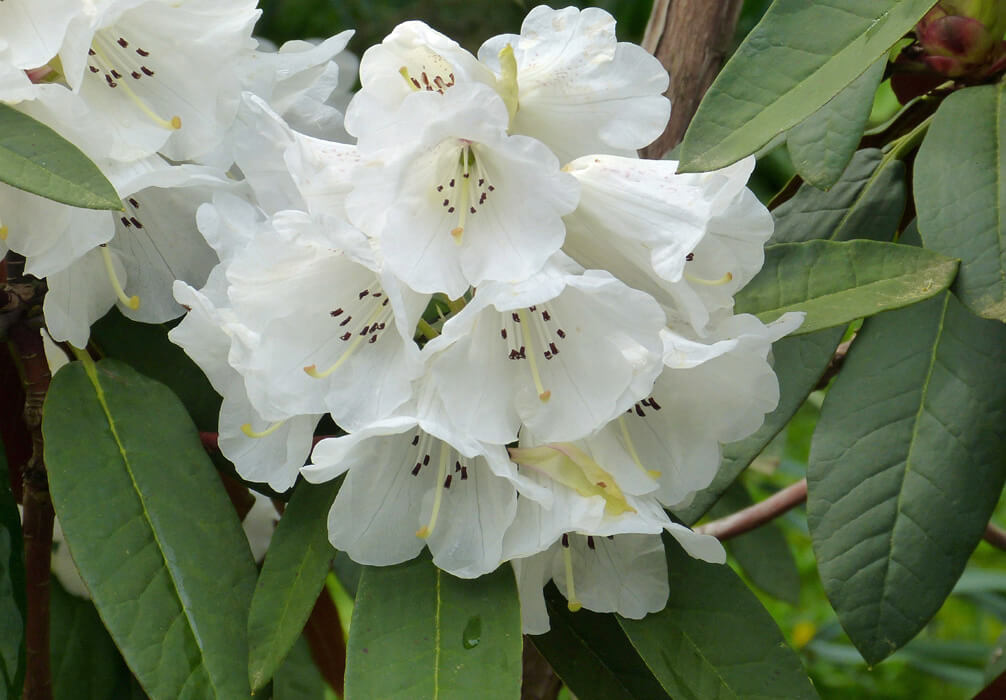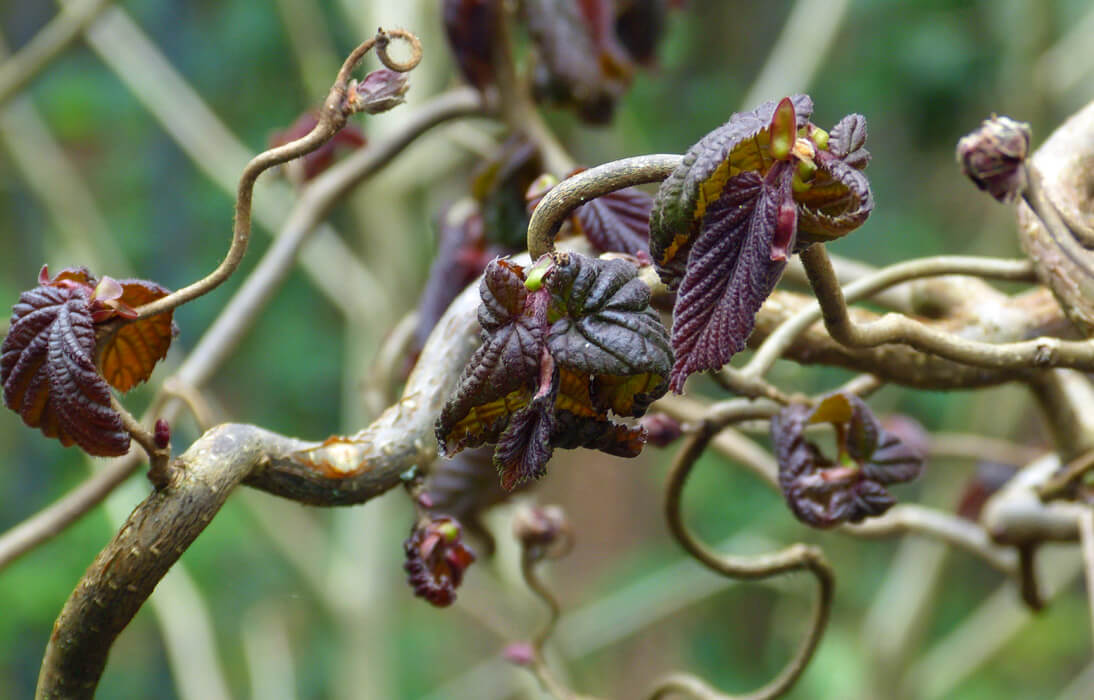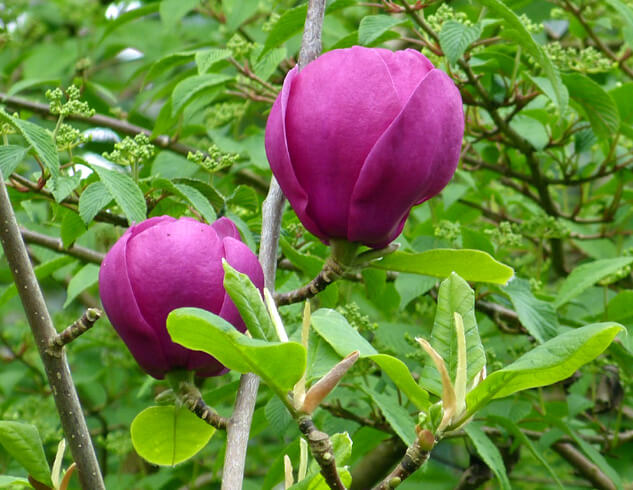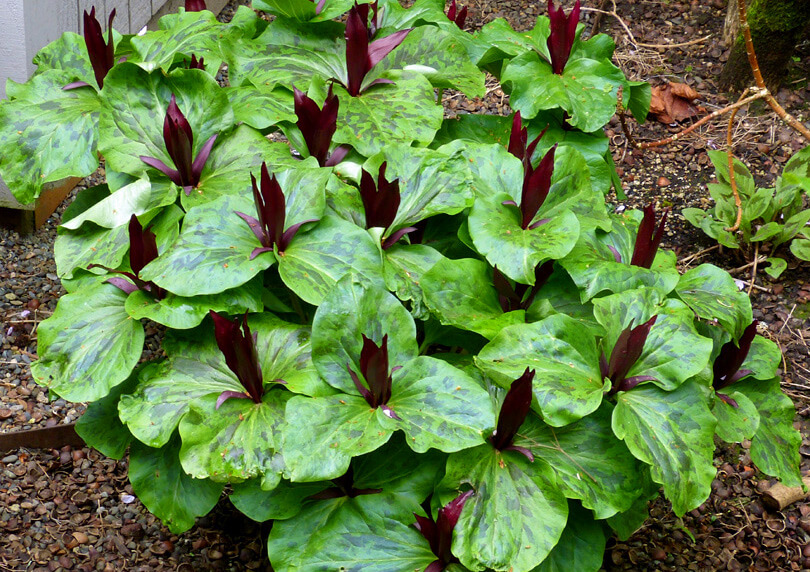
Here in the Pacific Northwest our spring season has been phenomenal. Of course we have had rainy cool spring days, but we have also had unbelievably warm and sunny days occurring over several weekends in March. Garden centers reported record sales during these times, and one salesperson told me it was like a sunny weekend in May because they were operating at capacity! That is certainly good news after last year’s spring when it seemed to rain every day. There’s no better time to share my spring garden picks.
April is a very special month for gardeners as we watch the miracle of nature’s emerging buds with flowers and foliage. The perennials have appeared after their winter dormant period, and it is a joy to see them popping up through the soil. I am making a concerted effort this year to be better about taking garden pictures when plants are at peak. Too often have I been guilty of letting the flowers fade and missing a photo opportunity. Whenever I give talks to garden clubs, one of the common questions asked is, “What is blooming or looking good in your garden now?” With a garden talk scheduled on April 15, I wanted address this question by sharing some of my favorite colorful spring garden plants, so I thought I’d share them with Black Gold readers, too. All of the photographs shown were taken during the week of April 8th.

Red-Leaf Contorted Filbert
The twisted branches of red-leaf contorted filbert (Corylus avellana ‘Red Dragon’) look good even without leaves, but with new red leaves emerging they put on quite a show. I have this plant in a large container, so it has room to spread and is an attention getter year-round. ‘Red Dragon’ is extremely easy to grow and requires little care once established. It will grow in full sun or partial shade, though the red leaves turn darker in full sun. The early season leaves keep their red color until late July, and contrast wonderfully with a background of green foliage, but then slowly turn dark green. With my ‘Red Dragon’ being a permanent container plant, I wanted to be certain I chose the best soil mix and fertilizer, so at the time of planting I used Black Gold All Purpose Potting Soil and added some organic fertilizer, which is approved for organic gardening and releases nutrients over an extended period of time.
Magnolia ‘Black Tulip’
When flowers appear on deciduous tree branches that are still barren of leaves, they provide quite a show. Many of the deciduous magnolias bloom in this manner, but Magnolia ‘Black Tulip’ is one of the most spectacular. This is my third year to have this tree, and this year is the first time it has multiple flowers. Each tulip shaped flower has among the deepest burgundy coloring that I have seen in a Magnolia. It is very easy to grow with and requires little care once established. It is a medium size tree, perhaps reaching 20 feet.

Rhododendron
Most gardens in the Pacific NW have at least one Rhododendron. Their splash of spring color is hard to dislike. Generally they are easy-care plants that enjoy mulch around their roots. I yearly add Black Gold Garden Compost Blend around the base of my rhododendrons as it tends to hold moisture and keep roots cool. Recently I have tried to select rhododendrons that provide some interest year round, even when they are not blooming. One of my favorites is Rhododendron ‘Sir Charles Lemon’ which is worth growing for the foliage alone. The leaves have glossy dark green tops and beautiful rusty indumentum (fine coating of hairs that gives a soft velvet-like feel to the touch) on the undersides. Currently my plant is in full bloom bearing white flowers with contrasting dark anthers.
Trillium
An outstanding native to Southwest Oregon and Northern California is Trillium kurabayashii or giant purple wakerobin. It has adapted very well to my garden. The substantial clump shown started as three small plants about seven years. Each year it gets bigger with the mottled leaves and complimentary the dark purple flowers that make

this a garden show stopper. My plants are shaded by a tree, and the soil is mulched yearly. This Trillium is a hard plant to find, but well worth the search. Once established, it can be left alone for many years.
This is just a small sample of beautiful, more unique plants blooming in my early spring garden. I tried to pick colorful favorites that would be less familiar to readers, in the hopes they will search out and plant something new and exciting.
Enjoy the spring season!

